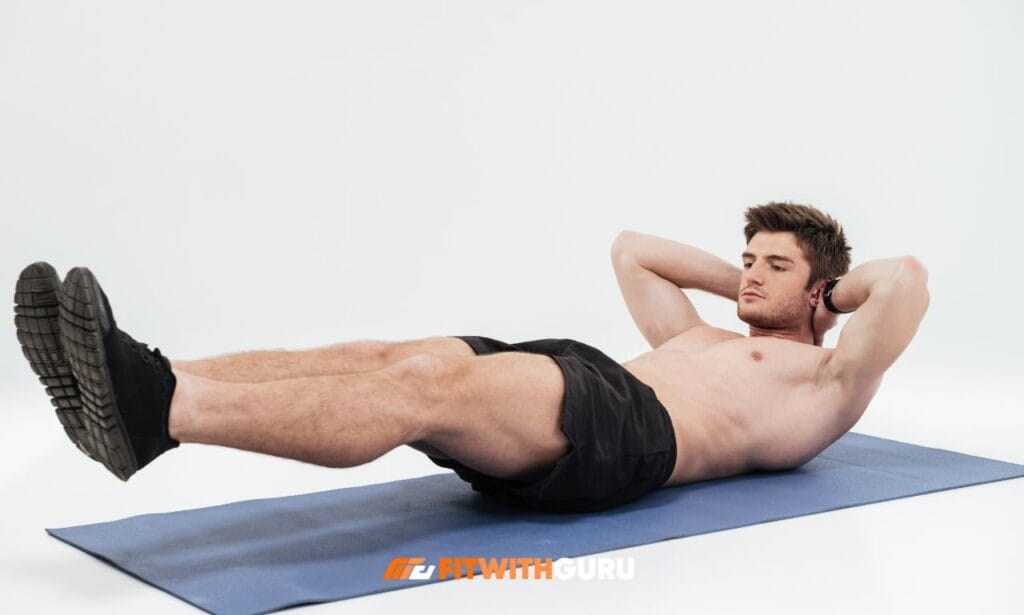Building impressive biceps through a calisthenic bicep workout doesn’t require expensive gym memberships or fancy equipment; just your body weight and creative exercise variations can transform your arms.
Most people think bicep training requires dumbbells and barbells, but bodyweight exercises can deliver equally impressive results when executed with proper technique and progressive overload. The beauty of calisthenics lies in its accessibility, allowing you to train anywhere while developing functional strength that translates to real-world movements.
Understanding Calisthenic Bicep Training
Calisthenic bicep training challenges the traditional notion that isolation exercises are the only path to muscular arms. Unlike conventional weightlifting, bodyweight bicep exercises engage multiple muscle groups simultaneously, creating compound movements that build overall functional strength.
The biceps brachii consists of two heads—the long head and short head—both of which can be effectively targeted through strategic bodyweight positioning and leverage manipulation. When you perform calisthenic bicep exercises, you’re not just building muscle; you’re developing tendon strength, improving joint stability, and enhancing neuromuscular coordination.
Research shows that progressive calisthenics can stimulate muscle hypertrophy comparable to traditional resistance training when intensity and volume are appropriately matched. The key lies in understanding how to adjust body angles, hand positions, and movement tempo to maximize bicep engagement throughout each exercise.
Why Choose Calisthenics for Bicep Development
Traditional gym-goers often overlook calisthenic bicep workout with no equipment options, missing out on numerous benefits that bodyweight training provides. Calisthenics develops relative strength—your power-to-weight ratio, which creates a lean, athletic physique rather than bulky mass.
Joint health improves significantly since bodyweight movements follow natural movement patterns, reducing the risk of overuse injuries common with heavy lifting. Your grip strength will skyrocket through calisthenic training, as hanging and pulling exercises demand constant engagement from your forearms and hands.
Financial freedom comes with bodyweight training; no monthly gym fees, no equipment purchases, just you and gravity working together. The convenience factor cannot be overstated—you can perform a calisthenics bicep workout at home, at parks, during travel, or virtually anywhere with minimal space.
Progressive overload remains achievable through tempo variations, increased repetitions, advanced progressions, and strategic angle adjustments.
The 7 Essential Calisthenic Bicep Workout
1. Chin-Ups: The King of Bodyweight Bicep Workout Builders
Chin-ups represent the gold standard for calisthenic bicep exercises, delivering maximum muscle activation through a full range of motion. The supinated grip (palms facing you) positions your biceps as primary movers, forcing them to work harder than during standard pull-ups.
Begin by hanging from a bar with your hands shoulder-width apart, engage your core, and pull yourself upward until your chin clears the bar. Focus on initiating the movement from your biceps rather than swinging or using momentum, maintaining control throughout both the concentric and eccentric phases.
For beginners, assisted variations using resistance bands or performing negative-only repetitions (jumping up and slowly lowering down) build foundational strength. Advanced athletes can add pauses at the top position, perform slow eccentrics (5-second descents), or progress to weighted chin-ups for continued growth.
Target 3-4 sets of 6-12 repetitions, adjusting difficulty through progression or regression techniques based on your current fitness level.

2. Inverted Rows with Supinated Grip
Inverted rows provide a horizontal pulling pattern that complements the vertical pull of chin-ups, ensuring balanced bicep development. Set up a bar at waist height (using a Smith machine, TRX straps, or sturdy table), position yourself underneath with a supinated grip, and keep your body straight.
Pull your chest toward the bar while keeping your elbows close to your body, squeezing your biceps at the top of each repetition. The beauty of inverted rows lies in their scalability—adjusting the bar height or foot elevation changes the exercise difficulty dramatically.
Beginners should start with the bar higher (less challenging) and feet on the ground, while advanced practitioners can lower the bar and elevate their feet. This exercise particularly targets the biceps’ lower portion and the brachialis muscle, contributing to overall arm thickness and definition. Perform 3-4 sets of 10-15 repetitions, focusing on smooth, controlled movements without jerking or bouncing.
3. Close-Grip Pull-Ups
Close-grip pull-ups intensify bicep engagement by narrowing your hand position, creating a more direct line of pull through your arms. Position your hands 6-8 inches apart with a supinated or neutral grip, depending on equipment availability and comfort level.
The closer hand placement shifts more workload onto your biceps and inner back muscles, creating a different stimulus than standard chin-ups. Maintain a vertical pulling path directly under your hands, avoiding excessive swinging or kipping movements that reduce muscle tension.
This variation demands significant grip strength, simultaneously developing forearm musculature that contributes to overall arm aesthetics. Start with 3 sets of 5-10 repetitions, prioritizing quality over quantity to maximize bicep recruitment throughout each rep. As strength increases, experiment with weighted variations or pause repetitions to continue challenging your muscles.
4. Pelican Curls on Rings or Low Bar
Pelican curls represent an advanced calisthenic bicep workout that delivers incredible isolation similar to traditional barbell curls. Set gymnastic rings or a low bar at hip height, grasp them with a supinated grip, and lean back until your arms are fully extended.
Keeping your elbows stationary and pointed forward, curl your body upward by flexing your biceps, bringing your hands toward your shoulders. This exercise creates constant tension throughout the entire range of motion, eliminating rest points common in other movements.
The stretched position at the bottom provides a deep bicep stretch that stimulates muscle growth through different mechanisms than shortened-position exercises. Beginners should start with a partial range of motion, gradually increasing depth as bicep strength and flexibility improve over time. Aim for 3 sets of 8-12 controlled repetitions, focusing intensely on the mind-muscle connection to maximize bicep activation.
5. Commando Pull-Ups
Commando pull-ups (also called alternating grip pull-ups) introduce rotational elements that challenge biceps from multiple angles simultaneously. Position yourself under a bar, facing perpendicular to it, with one hand in front of the other on the same bar.
Pull yourself upward, alternating which side of your head passes the bar with each repetition, creating a twisting motion. This asymmetrical pulling pattern forces each bicep to work independently, correcting strength imbalances between your left and right arms.
The exercise also develops core stability and rotational strength, creating functional fitness that extends beyond aesthetic arm development. Perform 3 sets of 6-10 repetitions per side, maintaining strict form and avoiding excessive body swing throughout the movement. Switch hand positions between sets to ensure balanced development and prevent adaptation to a single movement pattern.
6. Isometric Chin-Up Holds
Isometric holds leverage time under tension principles, creating metabolic stress that triggers muscle growth through different pathways than dynamic movements. Jump or pull yourself into the top position of a chin-up, with your chin above the bar and biceps fully contracted.
Hold this position for 20-40 seconds, maintaining maximum tension throughout your biceps and focusing on active muscle engagement. The constant contraction without movement creates occlusion, limiting blood flow and creating a pump effect that enhances muscle hypertrophy.
This technique proves particularly valuable for breaking through strength plateaus or finishing workouts with a high-intensity burnout set. Advanced variations include performing holds at different positions (top, mid-range, and bottom) to target various portions of the strength curve.
Include 2-3 isometric holds in your routine, either as standalone exercises or combined with dynamic repetitions for maximum bicep stimulation.
7. Bodyweight Bicep Curls on Elevated Surface
Bodyweight bicep curls adapt traditional curl mechanics to a calisthenic framework, providing direct bicep isolation without equipment. Find an elevated surface like a table, countertop, or sturdy desk that reaches approximately waist height when standing. Place your hands under the surface with a supinated grip (palms facing upward), position your body at an angle, and perform a curling motion.
Pull your body upward by flexing your biceps while keeping your elbows stationary, creating a movement pattern similar to dumbbell curls. The angle of your body determines resistance; standing more upright decreases difficulty, while leaning back increases bicep load.
This exercise works exceptionally well as a finishing movement after compound exercises, targeting any remaining muscle fibers. Complete 3-4 sets of 12-20 repetitions, emphasizing the squeeze at the top and controlling the descent for maximum time under tension.

Structuring Your Calisthenic Bicep Workout at Home
Creating an effective calisthenics bicep workout at home requires strategic exercise selection, proper volume distribution, and adequate recovery periods. Begin each session with a thorough warm-up, including arm circles, band pull-apart, and light dead hangs to prepare your joints and connective tissues.
Structure your workout with compound movements first (chin-ups, inverted rows) when energy levels are highest and the nervous system is fresh. Follow with isolation-focused exercises (pelican curls, bodyweight curls) after completing primary movements, capitalizing on pre-exhaustion for maximum muscle stimulation.
A sample weekly structure might include two dedicated upper body days featuring bicep work, allowing 48-72 hours between sessions for recovery. Training frequency matters—hitting biceps 2-3 times weekly provides optimal stimulus without overtraining, balancing muscle breakdown and repair cycles.
| Exercise | Sets | Reps | Rest Period |
| Chin-Ups | 3-4 | 6-12 | 2-3 minutes |
| Inverted Rows | 3-4 | 10-15 | 90 seconds |
| Pelican Curls | 3 | 8-12 | 90 seconds |
| Isometric Holds | 2-3 | 20-40 sec | 2 minutes |
Progressive Overload Strategies for Continuous Growth
Progressive overload remains the fundamental principle driving muscle adaptation, requiring systematic increases in training stress over time. Increase repetitions first—once you achieve the upper range of target reps with good form, progress to a more challenging variation.
Tempo manipulation creates additional tension; try 3-second eccentrics, 1-second pauses, or explosive concentric phases for different stimuli. Reduce rest periods between sets gradually, increasing workout density and metabolic demand without changing exercise difficulty.
Add resistance through weighted vests, backpacks filled with books, or ankle weights secured around your waist for advanced progressions. Incorporate advanced variations like archer chin-ups, one-arm negatives, or typewriter pull-ups as strength increases beyond basic movements.
Track your workouts meticulously in a training log, recording exercises, sets, reps, and perceived difficulty to ensure measurable progress.
Common Mistakes to Avoid in Calisthenic Bicep Training
Using momentum and swinging during pull-ups reduces bicep tension, transforming effective strength exercises into ineffective cardio movements. Neglecting the eccentric phase (lowering portion) wastes half the muscle-building potential, as eccentric contractions create significant growth stimulus.
Training biceps in isolation while ignoring opposing muscle groups (triceps, shoulders, back) creates imbalances that limit overall arm development. Insufficient recovery between training sessions prevents adaptation, as muscles grow during rest periods, not during workouts themselves.
Maintaining the same routine indefinitely causes adaptation plateaus; introduce variation every 4-6 weeks through exercise selection, rep ranges, or intensity techniques. Sacrificing form for additional repetitions leads to injury risk and reduced muscle activation, making easier variations with perfect form more productive.
Ignoring nutrition undermines training efforts muscle building requires adequate protein (1.6-2.2g per kg bodyweight) and caloric surplus for optimal growth.
Nutrition and Recovery for Maximum Bicep Development
Protein timing matters less than total daily intake, but consuming 20-40g protein within 2 hours post-workout optimizes muscle protein synthesis. Carbohydrates fuel intense training sessions and replenish glycogen stores; aim for 3-5g per kg bodyweight on training days to support performance.
Hydration affects muscle function and recovery—dehydration reduces strength output and impairs nutrient delivery to muscle tissues. Sleep represents your most powerful recovery tool; prioritize 7-9 hours nightly to maximize hormone production and tissue repair.
Active recovery through light movement, stretching, or yoga on rest days promotes blood flow without creating additional muscle damage. Consider supplementation strategically: creatine monohydrate enhances strength and work capacity, while fish oil supports joint health and reduces inflammation.
Patience proves essential—building significant muscle naturally requires months of consistent training, not weeks, so maintain realistic expectations.
Frequently Asked Questions
Can you really build biceps with calisthenics alone?
Absolutely—numerous calisthenic athletes have developed impressive biceps using only bodyweight exercises. The key involves progressive overload through advanced variations, increased volume, and strategic programming that creates sufficient mechanical tension. While traditional weights offer easier load quantification, calisthenics develops functional strength alongside aesthetics, creating well-rounded arm development. Combining proper technique, adequate nutrition, and consistent training yields comparable muscle growth to conventional weight training methods.
How long does it take to see results from calisthenic bicep exercises?
Beginners typically notice strength improvements within 2-3 weeks, with visible muscle changes appearing after 6-8 weeks of consistent training. Muscle growth depends on numerous factors, including genetics, nutrition, training intensity, recovery quality, and previous training experience. Intermediate practitioners might require 8-12 weeks for noticeable size increases, as adaptation occurs more slowly with advanced training status. Document progress through photos, measurements, and performance metrics rather than relying solely on mirror assessments for accurate progress tracking.
What’s the best frequency for training biceps with calisthenics?
Training biceps 2-3 times weekly provides optimal growth stimulus for most individuals, balancing training stress and recovery capacity. Since many calisthenic exercises incorporate biceps secondarily, calculate total weekly volume from all pulling movements, not just direct bicep work. Advanced athletes might handle higher frequencies through strategic programming that varies intensity and volume across training sessions. Listen to your body—persistent soreness, decreased performance, or joint pain indicate insufficient recovery requiring frequency reduction.
Do I need equipment for an effective calisthenic bicep workout?
Calisthenic bicep exercises have no equipment options, though having a pull-up bar dramatically expands exercise possibilities and progression options. Minimal equipment, like doorway pull-up bars, gymnastic rings, or TRX straps, costs relatively little while multiplying available exercise variations. Creative use of furniture, playground equipment, tree branches, or sturdy doorframes allows for effective bicep training without the need for specialized equipment. However, investing in basic equipment removes limitations and provides safer, more comfortable training environments that support long-term consistency.
How do calisthenic bicep workout compare to traditional weight training?
Both methods effectively build muscle when implemented properly, with neither approach inherently superior for all individuals or circumstances. Calisthenics develops relative strength and body control alongside muscle mass, while traditional weights offer easier progressive overload quantification.
Weight training allows more precise isolation of individual muscles, whereas calisthenics emphasizes compound movements and functional integration. Many athletes combine both modalities, using calisthenics for foundational strength and bodyweight mastery while incorporating weights for targeted hypertrophy.
Conclusion
Developing impressive arms through a calisthenic bicep workout requires dedication, strategic programming, and consistent effort over extended periods. The 7 exercises outlined provide comprehensive bicep stimulation from multiple angles, ensuring balanced development of both bicep heads and supporting musculature.
Success in calisthenic bicep training extends beyond exercise selection—proper nutrition, adequate recovery, progressive overload, and technique refinement all contribute equally to results. Start with exercises matching your current fitness level, focus on perfect form before increasing difficulty, and track progress systematically to ensure continued adaptation.
The convenience and accessibility of calisthenics bicep workout at home options eliminate common barriers to consistent training, making muscular arms achievable for anyone willing to put in the work. Remember that building muscle naturally takes time; embrace the journey, celebrate small victories, and trust that consistent effort compounds into impressive results over months and years of dedicated training.

